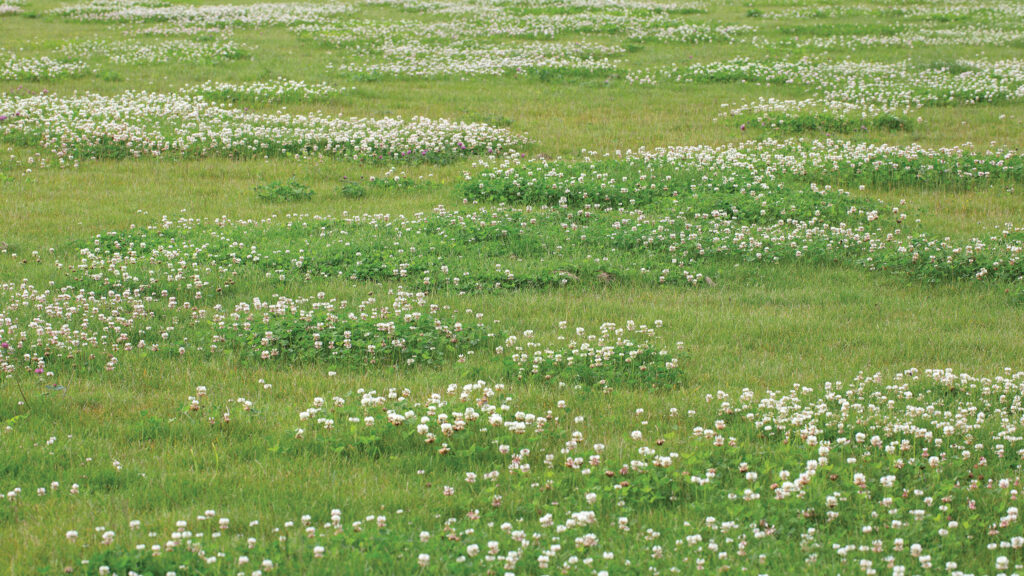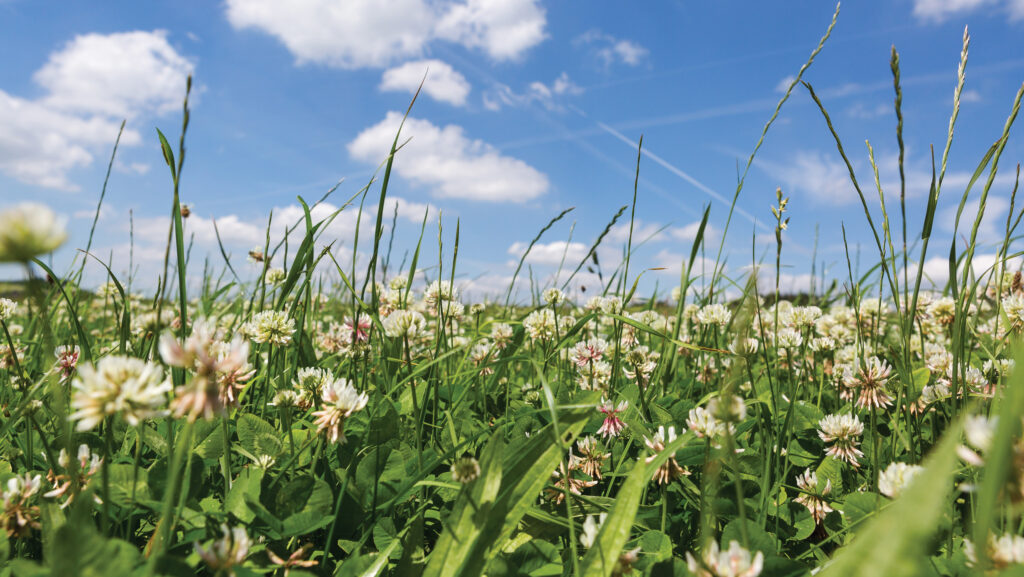Tips for establishing white clover in a sward
 © Adobe Stock
© Adobe Stock A combination of correct pH, good seed-bed conditions and minimal competition from weeds is important for successful clover germination, according to consultant Andre van Barneveld of Graise Consultancy in Ireland.
Pre-establishment weed management is essential unless post-emergence, clover-safe herbicides or mowing are used as control methods.
Andre says clover likes a pH of 6.2-6.5, a soil temperature at sowing of 10-15C, and ideal soil moisture content, “not too wet, not too dry”.
See more: How to get the most from red clover in silage
“Clover is a small seed, so sow it shallow at 5-10mm depth. Roll before and after to get that soil-to-seed contact.
“Rollers can squash soil particles, smudge the surface and close out oxygen, but at the correct soil moisture it works,” he says.
“It’s tricky. You don’t want compaction – you need the seed to sit snugly against soil particles.
“Ploughing is seen as ‘bad’, but sometimes you need a reset to get some soil activity, so don’t be afraid of cultivation in certain situations to resolve compaction or aerate.”
Seed rate
Andre says the traditional seed rate of 2.5kg/ha should provide a good clover content (a minimum 20%). However, he recommends doubling this rate in an existing sward, or where conditions are “challenging”.
Relying on the plant self-seeding, or feeding it to cows in the parlour to spread through their manure, results in patchy cover, he says.
“There is a ‘sweet spot’ for the amount of clover in a paddock, but even distribution throughout the sward is better than patchy. You need 25-30% throughout the whole sward,” he adds.
“I have clients who broadcast seed on the paddock and cows tread it in at the next grazing; when there is enough moisture, clover seed does not need to be buried.”

© Adobe Stock
Growing roots
A rethink on soil nutrients is also needed for healthy plant establishment, he points out.
“It is not a simple NPK [nitrogen, phosphorus, potassium] scenario, but all about timings and what you are trying to achieve at establishment.
“If you want resilience and sustainability [and] reduced reliance on chemical inputs, then root structure is the key to pasture.
“If you keep feeding the surface [with artificial nutrients], there is no need for the plant to develop deep roots,” he explains.
“The correct calcium-to-magnesium ratio gives good oxygen structure in the soil, which is essential for root structure development. Use slurry and farmyard manure in the seed-bed – 1,500 gallons/acre [16.85cu m/ha] max – to let seed develop naturally.
“Don’t use [artificial] nitrogen at sowing, or the clover plant won’t be efficient at mobilising nitrogen later on. P and K are very important once a leaf is up; then it can mobilise nitrogen.”
Sulphur is another critical element for developing nodules on clover’s root structures. “Usually, a lack of nodules reflects a lack of sulphur,” Andre explains, adding that without molybdenum, clover cannot mobilise atmospheric nitrogen.
“There’s a lot more to clover than people realise. Clover root helps soil structure, water infiltration, and through a dry period – the sward hangs on a bit longer.
“Once moisture returns, you get a better response straight away. Clover is two to three times more moisture-use efficient than grass.”
Clover facts
- A 20-30% cover of white clover fixes 180kg/ha of nitrogen
- Its deep taproot system breaks soil compaction and allows movement of nutrients and water
- Starts growing at 8C soil temperature
- Red clover/ryegrass swards can produce 10-14t/ha of dry matter a year
- Red clover silage averages 14-19% crude protein
Source: AHDB
Andre van Barneveld was speaking at AHDB Dairy’s recent Curious about Clover meeting in Cheshire
